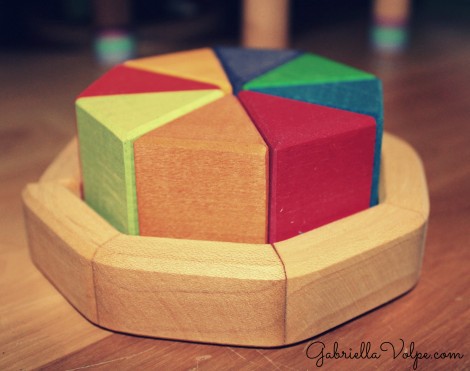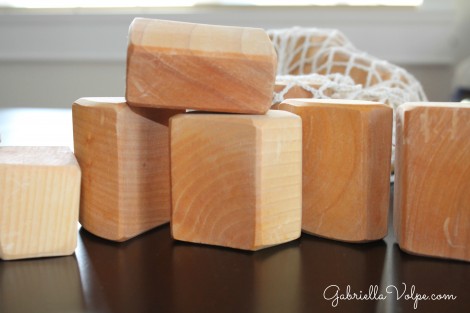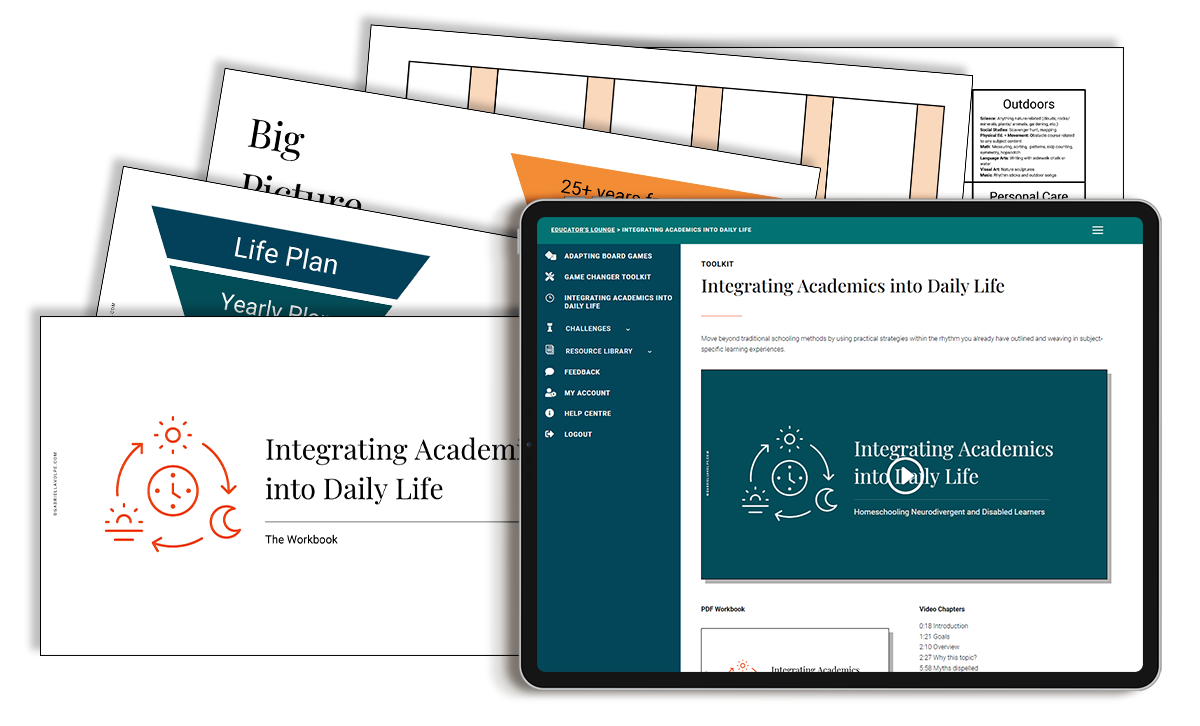There are as many styles of educating our children at home as there are types of schools.
When homeschooling a neurodivergent or disabled child, this research can be daunting from the get-go. Each of these styles can be adapted and modified to meet your child’s needs. You will find, however, that one style is better suited for your family/child. Some of the philosophies better lend themselves to adaptations/modifications than others.
This post is meant to give you little snippets of the main educational philosophies so that you can eliminate the ones that do not resonate with your family’s beliefs about education (and that do not match your child’s learning style/intelligence). Do more research into two or three that call to you most. This is by no means an exhaustive list of all of the educational philosophies.
Educational Philosophies
School at home: As the name implies, you could choose to run things as in the classroom, at home. Parents who select this style often get access to the textbooks used in their region and basically follow what the neighborhood kids are getting at school. This method relies heavily on worksheets and tests for materials and does bring a sense of comfort and direction to parents whose children are accustomed to a school setting.
Unschooling: This approach is somewhat on the opposite side of the spectrum as it chooses not to use a set curriculum, textbooks, workbooks and testing as learning materials. Instead, parents of unschoolers choose a more child-led approach to learning. The child informally creates their own curriculum based on interests from life experiences.
Inquiry-based/problem-based/project-based learning: This method is often child-led, but facilitated by the parent/adult. The child shows an interest in a problem (within any subject), raises questions and conducts the research to answer those questions. The learner makes decisions in the process (ie: where will they find the information), interacts with others (i.e.; in the community, online, with family members), as well as when the child makes a judgement about the results.
There is a sense of satisfaction that emanates as the child’s questions are answered, and they may now have additional inquires raised from the results. The parents guide this process by offering books, tools, resources, (i.e.; science materials, art materials, musical instruments, etc.)
The beauty of this method is that humanitarian or social justice issues can be the instigating question, and the result could be something as beautiful as the child deciding to take action within his community.
Montessori: Developed by Maria Montessori, this early childhood philosophy embraces the freedom of allowing children to choose their activities, within certain limits. The adult prepares various centers with rich materials but doesn’t do any direct teaching. The children are left to explore and construct on their own.

In the Montessori method, these wooden shapes might be left on a table for children to explore, touch and feel.
Reggio Emilia: This early childhood and primary-grade approach is another self-directed approach where children are invited to an activity based on the beauty of the presentation of materials. Developed in Reggio Emilia, Italy, by a philosopher along with parents, this method primarily builds on respect, responsibility, and relationships.
Waldorf: Developed by Rudolf Steiner, this method of education is a holistic approach. It falls under the umbrella of what Steiner coined as “Anthroposophy “– the belief that the human being has a body, a soul, and a spirit. Each of these is nurtured in the child in Waldorf education through much focus on form drawing, handwork, music, poetry, botany, and movement in addition to the academic subjects. Each year introduces a new literary genre as a means to learning the academics, beginning with fairy tales and fables in the earlier grades and working through myths, legends and stories of medieval times in the older grades.

The Waldorf philosophy incorporates natural textures in learning. For children with sensory issues, wooden blocks present a wonderful experience in touch and smell.
Charlotte Mason: Charlotte Mason was a British educator who developed this approach to education with an emphasis on three domains: atmosphere, discipline, and life. Students learn through living books, hands-on experiences and through forming healthy habits.
Classical: This mode of education is rooted in classic civilizations–mostly Greek and Roman. The adults are highly involved in the discussions that take place after reading classic works of literature.
Eclectic: I have a feeling that there is something in each of the styles above that draws you in. If so, then you might be thinking that you’d like to pick and choose a little of everything. That’s considered eclectic homeschooling.
Which educational philosophy to choose?
While you may find that choosing a little of everything is enticing to you, and while going eclectic is doable, if you’re just starting off with homeschooling, I recommend selecting one approach that most meshes with your family’s educational philosophy as well as your child’s learning style to prevent you from feeling overwhelmed.
To narrow it down, ask yourself:
- Which method immediately made my heart flutter?
Chances are, that’s the one for your family. Remember you already intuitively know what would suit your child and family.
While each method could be modified and adapted to your neurodivergent or disabled child, chances are, the approach that made your heart sing was the one that is already most fitting for your child.
Which is my personal choice?
As a classroom teacher, I preferred to use the inquiry-based method. It was magical to watch children go from knowing very little about a topic to becoming experts.
However, as a mother of a disabled child, this method didn’t work for us when we first began homeschooling.
In researching the different philosophies, I was drawn to the Waldorf philosophy the most. The simple toys, the wooden and silken textures, the idea of holistic, nurturing beliefs just fell so perfectly with everything I had already been doing since my son was born. Attachment parenting is highly encouraged in this method as well.
I have also learned that Steiner, even so many years ago, addressed and acknowledged children with disabilities in this approach.

These wooden blocks don’t have a defined shape, allowing the child to use their imagination. The Waldorf style of education encourages the use of natural materials that this toy offers. These are cedar blocks and possess a distinct scent–again, making it a multi-sensory experience for your neurodivergent or disabled child.
Despite my attraction to this one particular philosophy, there are many elements of the other philosophies that I to incorporate into our days. In fact, we have adopted an unschooling approach in the last few years.
Since we’re homeschooling, we can do that. We can select from the vast menu and truly make home learning our own.
What to do next?
Write in your home educating reflections journal what your top choice is. Then, do a little research. I share some resources below.
Which philosophy of education calls to you the most? Have you already been using one style over another? Is there a philosophy you’re using or drawn to that I haven’t mentioned? What has been your experience?
Resources:
I list one or two sites from each philosophy meant to whet your appetite and get you started on your research.
Dayna Martin – Read up on radical unschooling
Project-based Homeschooling – A beautiful, inspirational site for inquiry/project/problem-based learning
Living Montessori Now – A thorough blog with everything you need to know about homeschooling Montessori-style
An Everyday Story – A blog with a Reggio Emilia and project-based approach
Fairy Dust Teaching – A beautiful site with wonderful programs to help you on your Reggio Emilia journey
Waldorf Homeschoolers – A complete site about Waldorf education and homeschooling
Simply Charlotte Mason.com – A complete guide to homeschooling through the Charlotte Mason approach with free downloads to sample
The Well-Trained Mind – A site/book about classical education

Integrating Academics into Daily Life Workshop
Discover how to integrate academics into daily life. For homeschoolers of neurodivergent and disabled learners.

0 Comments